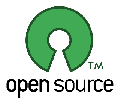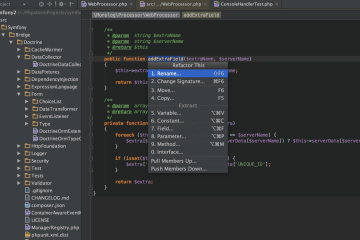The reality of open source is that it in fact predates commercial software, when computers became available around 1945 the primary mode of software development was extremely collaborative. People learned how to program working for computer manufacturers who didn’t see any benefit to the commercialization of the software. Why is it that today the commercial software industry dominates a landscape where open source software is equally capable?
 The answer might be as simple as marketing. In fact, the term Open Source (OSI) was intended to be a marketing slogan that replaced the loosely termed “free software” movement.
The answer might be as simple as marketing. In fact, the term Open Source (OSI) was intended to be a marketing slogan that replaced the loosely termed “free software” movement.
Unfortunately, OSI does not have the deep pockets of a large commercial establishment. As Steve Yegge pointed out in a recent podcast, people don’t really care how good your product is – it’s only about the brand association they have made with it. This is why Kleenex is so popular or that New Coke failed despite the fact that it actually tasted better. Once consumers have accepted your brand it’s very difficult to break that connection.
Why is this a problem for Open Source?
Consumers have already made a connection with commercial software, they know who Microsoft is and accept the products offered by that brand. Apple is experiencing a resurgence primarily as a result of brand, consumers have accepted Mac as a high-end computer that “just works”.
Normally, brands can try to re-establish themselves by choosing new names. To some extent, the free software movement already attempted to do this by calling themselves Open Source. The problem is, open source has no visibility in the consumer marketplace because it is free by design. You won’t see any glossy ads in Wired for LInux or flashy TV promo spots for the latest version of Firefox. In many ways, it’s amazing that open source has made any inroads at all.
Just because something is good doesn’t mean that consumers will use it. You might have the best software in the world, but if it isn’t promoted properly your market will never materialize. Of course when you product is free then consumers have no reason to buy it, in which case the market for your product is somewhat difficult to define.
To some extent the Internet has been an equalizer in this regard, if you visit the Firefox homepage you will find that the product looks attractive and the site may even convince you to install the program. Unfortunately, things are still somewhat muddy for potential users of open source solutions since it’s unclear how you get the product when there is nothing to buy.
Maybe the only way open source can take a foothold is if users can be convinced that software is suppose to be free? Unfortunately, for this to happen it will take significant financial investment and an extensive advertising campaign – neither of which is something that free software can afford to do. So ultimately it may be that the only way free software can reach people is by making it something you pay for rather than give away.
